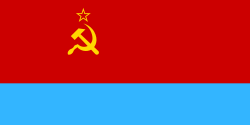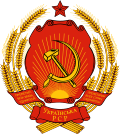Crimean Autonomous Soviet Socialist Republic
| |||||||||
|---|---|---|---|---|---|---|---|---|---|
| ASSR of the Ukrainian SSR Autonomous republic of Ukraine | |||||||||
| 1991–1992 | |||||||||
 | |||||||||
| Capital | Simferopol | ||||||||
| • Type | Autonomous Soviet Socialist Republic (1991–92) | ||||||||
| History | |||||||||
• Established | 12 February 1991 | ||||||||
| 26 December 1991 | |||||||||
• Disestablished | 6 May 1992 | ||||||||
| Contained within | |||||||||
| • Country | (1921–91) (1991–92) | ||||||||
| |||||||||
| Today part of | |||||||||
The Crimean Autonomous Soviet Socialist Republic was a polity on the Crimean Peninsula within the Ukrainian Soviet Socialist Republic that was formed during the collapse of the Soviet Union and the following year was renamed the Republic of Crimea. It was later reconstituted as the Autonomous Republic of Crimea.

